
Curse of the Azure Bonds is a role-playing video game developed and published by Strategic Simulations, Inc (SSI) in 1989. It is the second in a four-part series of Forgotten Realms Advanced Dungeons & Dragons Gold Box adventure computer games, continuing the events after the first part, Pool of Radiance.

Level 9 was a British developer of computer software, active between 1981 and 1991. Founded by Mike, Nicholas and Pete Austin, the company produced software for the BBC Micro, Nascom, ZX Spectrum, Commodore 64, Oric, Atari 8-bit computers, Lynx 48k, RML 380Z, Amstrad CPC, MSX, Amiga, Apple II, Memotech MTX, and Enterprise platforms and is best known for its successful text adventure games until a general decline in the text adventure market forced their closure in June 1991.
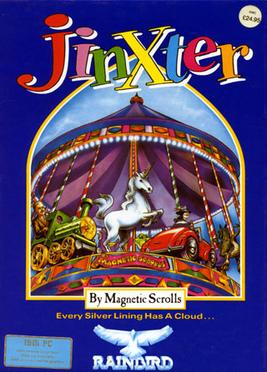
Jinxter is an interactive fiction video game developed by Magnetic Scrolls and published by Rainbird in 1987 for 8-bit and 16-bit home computers of the time. Jinxter tells the story of a man on a mission to save the fictional land of Aquitania from the looming threat of evil witches. The game was well received by critics upon its release.
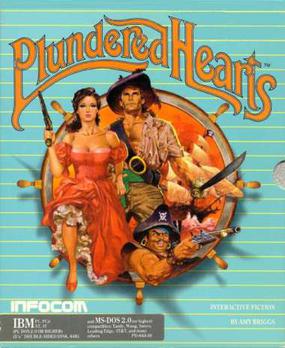
Plundered Hearts is an interactive fiction video game created by Amy Briggs and published by Infocom in 1987. Infocom's only game in the romance genre, it was released simultaneously for the Commodore 64, Atari 8-bit computers, Atari ST, Amiga, classic Mac OS, and MS-DOS. It is Infocom's twenty-eighth game.

A video game with nonlinear gameplay presents players with challenges that can be completed in a number of different sequences. Each player may take on only some of the challenges possible, and the same challenges may be played in a different order. Conversely, a video game with linear gameplay will confront a player with a fixed sequence of challenges: every player faces every challenge and has to overcome them in the same order.
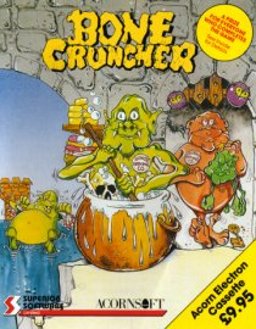
Bone Cruncher is a puzzle video game for the Acorn Electron, BBC Micro, and Commodore 64 first published by Superior Software in 1987. It uses the "rocks and diamonds" mechanics of Boulder Dash. An Amiga version was released in 1988.

The Guild of Thieves is an interactive fiction game by Magnetic Scrolls first published by Rainbird in 1987. The game takes place in Kerovnia, the setting of the company's earlier The Pawn.

Wonderland is an interactive fiction game developed by Magnetic Scrolls and published in 1990 by Virgin Games.

Elvira: Mistress of the Dark is a horror adventure/role-playing video game developed by Horror Soft and released by Accolade in 1990 for the Amiga, Atari ST, Commodore 64 and MS-DOS computers. It was Horror Soft's second published game after 1989's Personal Nightmare and stars the actress Cassandra Peterson as her character Elvira.

Gnome Ranger is a graphic adventure game designed by Peter Austin and released by Level 9 in 1987. A still image is shown for each location, and the player enters text commands to move or interact. Ports to the Apple II and Atari 8-bit computers are text-only. A sequel was published in 1988: Ingrid's Back.

Jewels of Darkness is a trilogy of text adventure games by Level 9. The individual games were initially released separately in 1982. They featured some themes and names inspired by the books of J. R. R. Tolkien and so became known as the Middle-Earth Trilogy. The individual releases were available for the BBC Micro unlike the compilation.
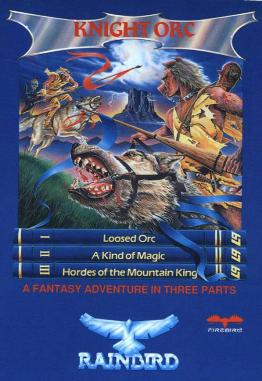
Knight Orc is a text adventure, with limited graphics on some platforms, by Level 9 released in 1987. It comes with a short novella by Peter McBride explaining the background to the story.
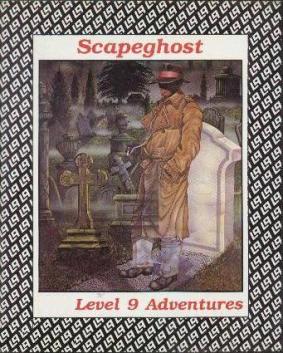
Scapeghost is a text adventure published by Level 9 Computing in 1989. It was the last text adventure game released by the company.
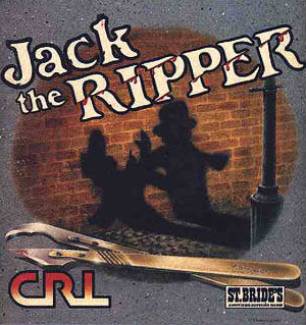
Jack the Ripper is a text adventure computer game designed by St. Bride's School and released by CRL in 1987 for the Commodore 64, Amstrad CPC and ZX Spectrum home computers. The game is based on the notorious "Jack the Ripper" murders in 1880s London.
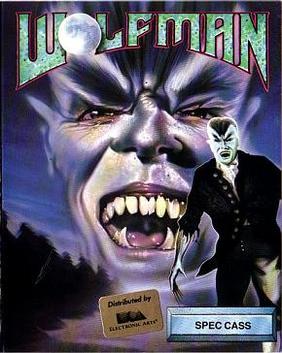
Wolfman is a text adventure video game released by CRL in 1988 for the Commodore 64, Amstrad CPC, and ZX Spectrum home computers.

Fish! is a text adventure game by Magnetic Scrolls released in 1988. The game was designed by John Molloy, Phil South and Peter Kemp with contributions by Rob Steggles.

Corruption is an interactive fiction game by Magnetic Scrolls released in 1988. In this game, a successful stockbroker suddenly finds himself embroiled in a world of crime and danger.

Last Ninja 2: Back with a Vengeance is an action-adventure video game developed and published by System 3 for the Commodore 64, ZX Spectrum and Amstrad CPC in 1988 as a sequel to the 1987 game The Last Ninja. The Acorn Electron, BBC Micro, 1990: Amiga, Atari ST, MS-DOS and NES ports followed in 1989. The NES version of the game was named simply The Last Ninja. In 1990, the Last Ninja Remix edition of the game was re-released for 8-bit systems.

Dexter's Laboratory: Mandark's Lab? is an 3D cel-shaded action-adventure video game released in 2002 for the Sony PlayStation and based on the American animated television series Dexter's Laboratory, which aired on Cartoon Network in the United States. In the game, Mandark gains access to Dexter's secret lab with the intention of destroying it, and Dexter is forced to take down his archenemy in order to reclaim it. Red Lemon Studios in Scotland developed the game for BAM! Entertainment, and it was first shown to the public at 2002's Electronic Entertainment Expo (E3). The game is designed for players 8 through 14 years of age.

Yes, Prime Minister is a 1987 adventure game based on the television series of the same name. It was developed by Oxford Digital Enterprises and published by Mosaic Publishing. It was released in Europe for Amstrad CPC, BBC Micro, Commodore 64, DOS, and ZX Spectrum. Critics found it a faithful adaptation of the television series, but remarked on its high price, short length, and lack of long-term appeal.




















